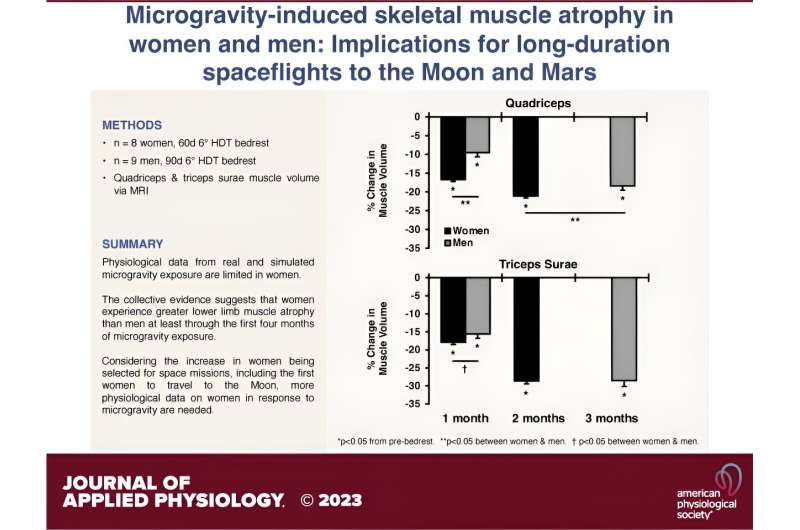This simulated a weightless condition similar to what crewmembers experience during spaceflight. Both volunteer groups ate, slept, performed personal hygiene, and all other activities in either the head-down tilt or a horizontal position.
The research team conducted magnetic resonance imaging tests on the volunteers' thigh and calf muscles before and after the trial as well as at the one-month mark of bed rest. These muscles were chosen "because they are critical for ambulation and extravehicular activities that likely will be required of space crews visiting the moon or Mars," the researchers said.
The researchers found that all participants lost a significant amount of muscle mass in both areas of the leg throughout their bed rest period compared to before bed rest. The women lost more muscle from the quadriceps at one month compared to the men, and the women lost more muscle mass at two months than the men lost at three months.
This trend is concerning not only because of the impact on typical muscle function but also because "it is now established that muscle serves as an endocrine organ, communicating with numerous other organs," the research team explained.
"The current findings from two spaceflight simulation studies suggest that women are more susceptible to weightlessness-induced muscle atrophy," the researchers wrote. "Therefore, a more appropriate path to understand sex-specific responses to microgravity (including the muscle atrophy issue) and to obtain data to better protect the health of future crewmembers may be through well-controlled long-duration bed rest studies with only exercise countermeasure groups."
The research team explained that they suggest this path because other studies have shown women to be very responsive to exercise countermeasures during (simulated) weightlessness. In addition, future space missions are likely to be much longer than the current study and information in this area is needed for longer durations of weightlessness.
More information: Todd A. Trappe et al, Microgravity-induced skeletal muscle atrophy in women and men: implications for long-duration spaceflights to the Moon and Mars, Journal of Applied Physiology (2023). DOI: 10.1152/japplphysiol.00412.2023
Journal information:Journal of Applied Physiology
Provided by American Physiological Society



